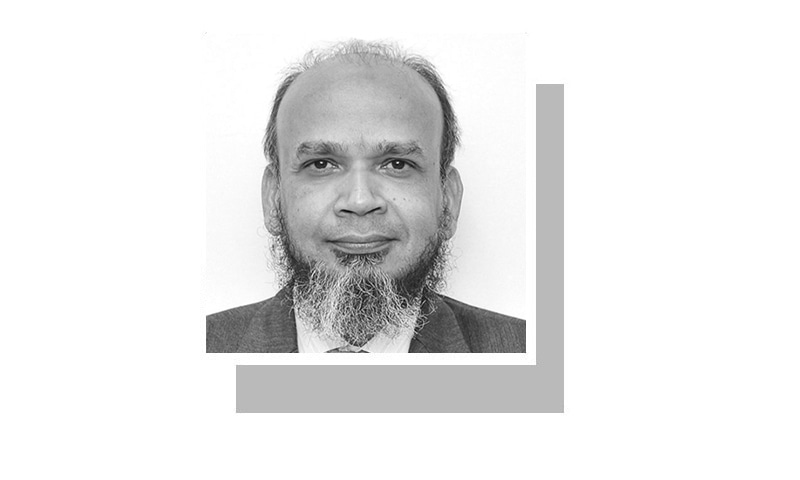By Riaz Riazuddin
Published in Dawn, December 10, 2021
WE save from our incomes and pay taxes. It is, therefore, important to review the trend in incomes first. According to the latest Household Integrated Economic Survey [HIES] 2018-19, our average monthly household income was Rs41,545, up from Rs7,168 in 2001-02. This is an average annual increase of 10.9 per cent. The income of the poorest one-fifth (in terms of consumption) of all households has increased from Rs4,391 to Rs23,192 during this period, representing an annual rise of 10.3pc. The income of the richest quintile has increased from Rs11,360 to Rs63,544, with an annual increase of 10.7pc. Inflation has risen in this period by an average of 7.9pc per year. This means that, on average, inflation-adjusted real incomes also increased during this period.
Remember that our country has about 34 million households. If the above income figures do not match your own experience, you are fortunate enough to belong to the top quintile of households of our country. If the HIES contained summary tables in terms of deciles or percentiles, many readers would find they belong to the richest 10pc or 5pc of all households in Pakistan. Also note that these seemingly low household incomes were earned not by one person alone. The average household size was 6.24 persons. The number of earners per household was 1.86. This means that the average income per earner is lower than the household income.
We all know about our low national savings rate, which was 10.8pc of GDP in 2018-19. Very few would know that our average monthly savings rate in terms of cash or deposits was only 4.6pc of monthly household receipts that year. If we add expenditure on purchasing jewellery and other financial assets, the household savings rate was 8.8pc in 2018-19, up from 6.3pc in 2001-02. Although our savings rate has increased during this period, progress on this front is extremely slow. Our habit of saving very little seems to be deeply entrenched. This also points towards the distinctive possibility of a misalignment in our macroeconomic policies which seem to incentivise consumption much more than savings. Just look at the past and present trends of interest rates. There is always a cacophony of protests when the rates go up although they benefit the savers.
Our focus is always on the ‘poor’ borrowers who are not really hurt by the rate increase, but just get squeezed a bit out of their profits. Our obsession to keep the dollar cheaper also promotes consumption rather than savings. Are we giving sufficient economic incentives to savers? Just look at the rate of return to depositors. It averaged only 4pc from 2001-02 to 2018-19. Compare this with an average inflation rate of 7.9pc per year in the same period (also remember that inflation was in double digits during 2008 to 2012.) So, the real rates were negative for depositors by very wide margins. Why lament low savings then? If we get the exchange rate and interest (monetary policy) right, these will help promote savings, besides also keeping inflation low.
There is always a cacophony of protests when the rates go up although they benefit the savers.
There are, of course, other policies to dampen consumption and promote savings (fiscal policies). Households pay direct and indirect taxes to the FBR. Sales tax and custom duties are embedded in the prices of goods consumed by households. Therefore, HIES can only provide estimates of expenditure on income tax and other direct taxes. How much taxes can our households pay? Our average household paid only Rs144.12 per month as direct taxes to the FBR in 2018-19. This is less than even half of 1pc of household income — 0.35pc to be precise! It was 0.38pc in 2001-02. It would be very difficult to find other countries whose households pay less than this as direct taxes. To put this amount in perspective, the average household in the US paid 13.7pc of its income as direct taxes in 2019. Of course, this is not a fair comparison!
One might be tempted to conclude that our households evade taxes. This cannot be the whole truth as low collection has resulted from our tax policies. Our fiscal authorities have mostly been generous in either reducing the income tax rates or enlarging the income tax exemption slab. Providing ‘relief’ to the income taxpayers has always been on the minds of our finance ministers. Just to cite an example, according to the FBR Year Book 2018-19, one of the major reasons for the shortfall in tax collection was reduced income tax rates announced in the budget of that year. This is also a point to ponder for Laffer-curve enthusiasts who think lowering the tax rates will increase revenues. When a myriad of exemptions (like income from agriculture) is present, lowering tax rates is akin to shooting oneself in the foot.
We spend our income mostly on private goods. With a consumption-to-GDP ratio of over 93pc, we are ahead of several other countries in consuming private goods. But we lament the availability and quality of public goods like roads, bridges, clean water supply, drainage, sanitation system, internal security, etc. Paying taxes is the only way to ensure the availability of infrastructure. We want our governments to provide us every public good of good quality. On the one hand, our willingness to pay direct taxes is very low, and on the other, our government’s commitment to collect taxes is also very low (visible in many perpetual exemptions). This results in a gimmickry of supposedly intelligent measures by the fiscal authorities, which do generate some revenues — but the latter are very low compared to the tax loss due to exemptions.
According to the FBR Tax Expenditure Report 2021, exemptions to federal taxes cause a loss of Rs1,314 billion — equal to 3.2pc of GDP. Still, we continue to blame foreigners for our own misdeeds (imprudent macroeconomic policies.) We are destroying ourselves and fail to see it. The fault lies not in our stars but in ourselves.






